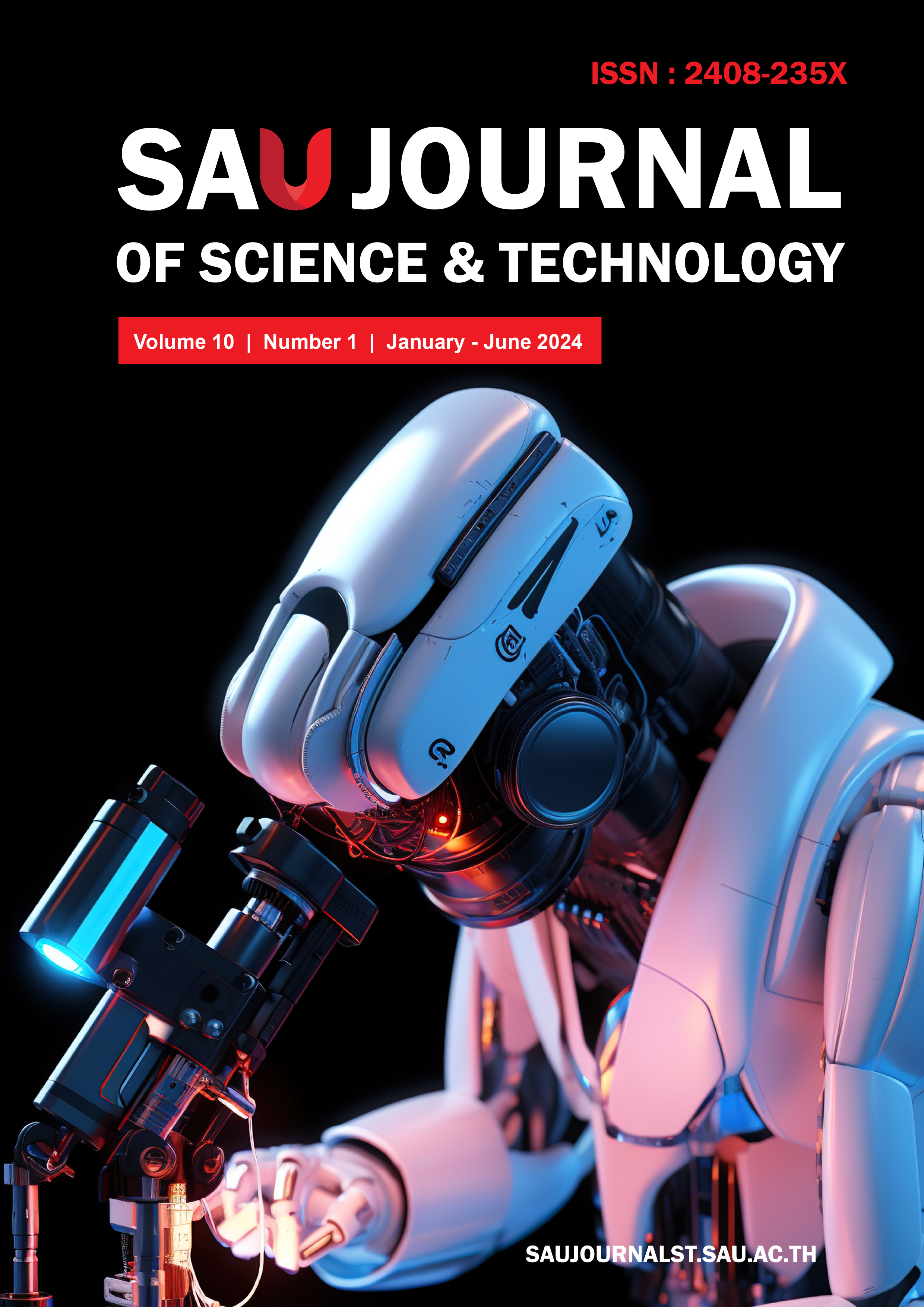Suggestions of water-saving measures: A Case Study of a University in southern China
Main Article Content
บทคัดย่อ
ทรัพยากรน้ำเป็นหนึ่งในองค์ประกอบสำคัญของการพัฒนาที่ยั่งยืนระดับโลก อย่างไรก็ตาม ปัจจุบันทรัพยากรน้ำกำลังเผชิญกับความท้าทายร้ายแรงทั่วโลก ซึ่งรวมถึงการขาดแคลนน้ำ มลพิษทางน้ำ และอุปสงค์และอุปทานที่ไม่สมดุล มาตรการอนุรักษ์น้ำถือเป็นประเด็นสำคัญในการแก้ปัญหาทรัพยากรน้ำทั่วโลกมาโดยตลอด บทความนี้ยกตัวอย่างมหาวิทยาลัยทางตอนใต้ของสาธารณรัฐประชาชนจีนเพื่อประเมินการใช้น้ำ บันทึกมาตรการประหยัดน้ำที่มีอยู่ และเสนอการปรับปรุงเพื่อการคุ้มครองและการใช้ทรัพยากรน้ำอย่างเป็นระบบและมีประสิทธิภาพ การศึกษานี้พบคำแนะนำที่สำคัญ เช่น การเปลี่ยนระบบประหยัดน้ำแบบแมนนวลเป็นระบบอัตโนมัติ การเพิ่มมาตรวัดน้ำระยะไกลสำหรับการตรวจจับการรั่วไหล การปรับปรุงระบบน้ำร้อน และการเพิ่มการนำน้ำฝนกลับมาใช้ใหม่เพื่อการรีไซเคิลน้ำอย่างมีประสิทธิภาพ ทั้งนี้การดำเนินการที่แนะนำสามารถประหยัดน้ำได้ไม่น้อยกว่า 30,000 ตันและค่าน้ำ 135,000 หยวนต่อปี
Article Details
เอกสารอ้างอิง
L. Liu, “Research on water resource security in China since the 21st century,” Inter. Political Studies, no. 2, pp. 136-159, 2023. (in Chinese).
World Meteorological Organization, “State of Global Water Resources 2022 Report,” WMO-No. 1333, pp. 1-53, 2023.
X. X. Sheng, “Global water resource: pressure continues to rise,” People's Daily Inter. Edition, September 26, pp. 17, 2023. (in Chinese).
Ministry of Construction of the People’s Republic of China, “General code for design of building water supply and drainage and water saving,” 2021. (in Chinese).
Ministry of Construction of the People’s Republic of China, “Domestic water saving devices,” 2002. (in Chinese).
M. Ali, G. Munala, T. Muhoro, J. Shikuku, V. Nyakundi and A. Gremley, “Water Usage Patterns and Water Saving Devices in Households: A Case of Eastleigh, Nairobi,” J. Water Resource Protection, Vol. 12, pp. 303-315, 2020.
K. Wong, Y. J. Zheng, Z. Zhang, Y. P. Tang, W. H. Song and X. M. Guo. “Investigation and Application of Water-Saving Monitoring Technology in Public Institutions,” Pearl River, Vol. 43, no. 6, pp. 45-52, 2022. (in Chinese, translated abstract).
S. S. Anchan and H. C. Shiva Prasad, “Feasibility of roof top rainwater harvesting potential - A case study of South Indian University,” Cleaner Engineering and Technology, Vol. 4, pp. 100206, 2021.
T. Liu, W. Z. Zhao, B. Ma and W. H. Zeng, “Research on the Construction of Rainwater Recycling and Utilization System in Universities, Taking Southern University of Science and Technology as an example,” Industry-Specific Services, pp. 75-77, 2023. (in Chinese).
K. Q. Zhang, H. S. Zhang, A. R. Ning, N. Wang, J. X. Li and L. B. Han, “Application and Development of Green Land Irrigation by Municipal Reclaimed Water at Home and Abroad,” Journal of Agro-Environment Science, Vol. 24, pp. 384-388, 2005. (in Chinese, translated abstract).
K. Q. Lu, “Application of Sponge City Concept in the Design of Water Supply and Drainage System for Building,” Smart City, Vol. 277, pp. 129-132, 2023. (in Chinese, translated abstract).
X. N. Li, J. Q. Li, X. Fang, Y. W. Gong and W. L. Wang, “Case Studies of the Sponge City Program in China,” World Env. Water Resources Cong., pp. 295-308, 2016.
H. Zheng, Z. H. Rao, L. F. Fang, D. Luo, “Design of Urban Intelligent Water Supply System Based on the Internet of Things,” Sci. Tech. Square, Vol. 176, no. 7, pp. 185-188, 2016. (in Chinese, translated abstract).
J. Pérez-Padillo, J. G. Morillo, J. Ramirez-Faz, M. T. Roldán and P. Montesinos, “Design and Implementation of a Pressure Monitoring System Based on IoT for Water Supply Networks,” Sensors, Vol. 20, pp. 1-19, 2020.
Q. S. Wang, D. X. Yang, X. X. Kong and K. Fang, “A leak detection system for water supply pipelines based on Internet of Things technology,” Computing Tech. Information Dev., Vol. 8, no. 2, pp. 70-71, 2011. (in Chinese).


